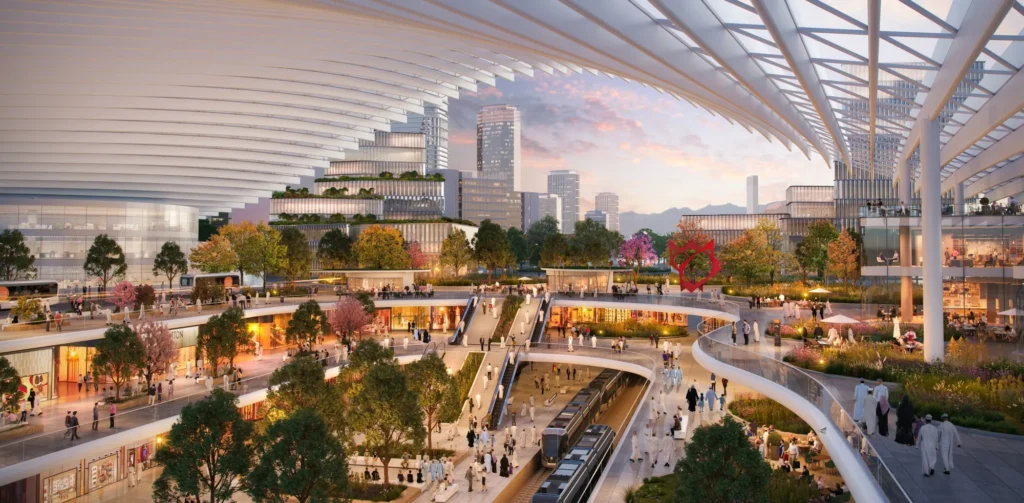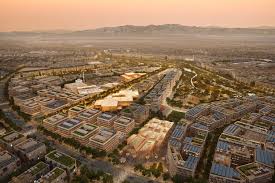Oman’s Vision for Modern Urban Growth
Oman is a country that blends its deep-rooted traditions with the aspirations of a forward-looking nation. Over the past few decades, the Sultanate has embarked on an ambitious journey to modernize its cities and towns while preserving the rich heritage that makes it unique. The government’s focus on urban development has not been limited to infrastructure alone. It extends to creating vibrant urban spaces where people can live, work, and thrive in harmony with their surroundings.
Modern urban centers in Oman are designed with a vision that combines sustainability, culture, and technology. The country has embraced progressive planning that ensures cities are not just places of residence, but hubs of innovation, commerce, and social life. The idea is not to imitate global megacities but to craft Omani cities that are distinctly modern while remaining true to their history and values. This balance is what makes Oman’s urban growth truly special.
Muscat: The Heart of Oman’s Modernity
Muscat, the capital city, stands as the most striking example of Oman’s urban transformation. Once a small trading port nestled along the Arabian Sea, Muscat has developed into a modern metropolis without losing its coastal charm. The city is known for its stunning architecture that merges tradition with modern design. Whitewashed houses, majestic mosques, and sleek commercial towers sit side by side, creating a visual identity that is both historic and contemporary.
Infrastructure in Muscat has grown rapidly with world-class highways, modern shopping malls, business centers, and cultural institutions. Yet, unlike many urban capitals, Muscat is not overwhelmed by skyscrapers. The city’s planners have taken careful measures to preserve the skyline, ensuring that new structures harmonize with the natural landscape of mountains and coastline.
Muscat is also the administrative and commercial heart of the country. Government ministries, multinational corporations, and financial institutions are headquartered here, making it the nucleus of Oman’s decision-making and economic activities. The city reflects the balance Oman seeks: a capital that welcomes global businesses and visitors while retaining its Omani character.
Sohar: Rising Industrial Powerhouse
Sohar, once a quiet coastal town, has transformed into a key industrial and commercial hub of Oman. Known historically as a major port in ancient trade routes, Sohar is now the epicenter of industrial growth, particularly in shipping, logistics, and manufacturing. Its modern port has made it an international gateway, attracting investments and generating thousands of jobs.
But Sohar is not just about industry. The city has seen rapid urban development with residential communities, shopping centers, hospitals, and schools catering to its growing population. Its coastal setting adds to the livability, with beautiful beaches and leisure spaces offering residents a balance between work and lifestyle.
The government’s vision for Sohar is to make it a sustainable city where industrial power coexists with green development. Efforts are underway to introduce smart infrastructure and expand public spaces, ensuring that Sohar remains both an economic engine and a desirable place to live.

Salalah: Southern Charm with Modern Progress
Salalah, located in the southern Dhofar region, is unlike any other city in Oman. Known for its lush greenery, monsoon rains, and unique climate, Salalah has always held a special place in the hearts of Omanis and visitors alike. In recent years, the city has embraced modern development while protecting its natural beauty.
Salalah has grown into a hub for trade and tourism. Its port is vital for global shipping routes, while its airports connect the city to international destinations. Modern infrastructure, including hotels, resorts, and shopping districts, has expanded to cater to the growing demand from tourists and residents.
Yet what makes Salalah stand out is its ability to integrate modern urban features with natural landscapes. Parks, green zones, and coastal developments have been designed to ensure the city maintains its serene character. Salalah represents how Oman is modernizing while respecting the environment a lesson many fast-growing cities around the world could learn from.
Nizwa: Blending Heritage with Modern Living
Nizwa, the historical capital of Oman, has long been known for its forts, souqs, and cultural heritage. But beyond its reputation as a cultural gem, Nizwa has also witnessed significant modern urban development. Educational institutions, healthcare facilities, and residential projects have expanded, making Nizwa not just a heritage site but a modern city where history and progress walk side by side.
Nizwa’s approach to modernization is deeply rooted in cultural preservation. The city is careful not to overshadow its ancient landmarks with modern construction. Instead, the new infrastructure complements the old, allowing residents and visitors to experience both tradition and progress within the same urban space.
The growing population of Nizwa has been supported by improved road networks, public services, and community facilities. The city’s transformation highlights Oman’s philosophy of development: modernization does not require abandoning history it requires embracing it.
Duqm: The City of the Future
Duqm is one of Oman’s most ambitious urban projects. Once a small fishing town, it is now being developed into a futuristic city that will become a global hub for trade, logistics, and industry. The Duqm Special Economic Zone is among the largest in the Middle East, with projects ranging from oil refineries to modern residential communities.
The vision for Duqm is clear: to create a city that attracts international business while offering residents a high standard of living. Modern housing, educational institutions, healthcare facilities, and leisure areas are being planned alongside industrial and commercial zones. This ensures that Duqm is not just an economic center but a complete city that people can call home.
Duqm represents Oman’s bold vision for the future. It demonstrates how the nation is positioning itself in global trade networks while ensuring sustainable, planned urban growth. For many, Duqm is a symbol of the Sultanate’s ambition and determination to craft a future-ready city.
Smart Infrastructure and Sustainable Living
One of the most remarkable aspects of Oman’s modern urban centers is the focus on smart infrastructure and sustainability. Cities across the Sultanate are adopting advanced technologies for transportation, energy, and public services. Renewable energy projects, waste management systems, and digital governance are becoming integral parts of the urban landscape.
Public transportation systems are being developed to reduce traffic congestion and environmental impact. At the same time, modern housing projects are designed to be energy-efficient, making urban living more sustainable. These measures reflect Oman’s commitment to creating cities that are not only modern but also environmentally responsible.
Urban Lifestyle and Social Harmony
Modern urban centers in Oman are not just about buildings and roads they are about people. The social fabric of these cities is woven with harmony, inclusivity, and a strong sense of community. Public spaces such as parks, waterfronts, and cultural centers encourage social interaction, while malls and commercial districts provide spaces for entertainment and leisure.
Education and healthcare have been given equal importance in urban planning. Schools, universities, and hospitals are equipped with modern facilities, ensuring that residents have access to quality services. This human-centered approach makes Omani cities not just modern but also livable and nurturing.

Cultural Identity in a Modern Setting
A defining feature of Oman’s urban growth is the preservation of cultural identity. Unlike many countries where modernization leads to cultural dilution, Oman has managed to maintain its heritage within modern settings. Architectural styles often draw inspiration from traditional Omani design, ensuring that new constructions still reflect the nation’s cultural DNA.
Festivals, souqs, and traditional markets continue to thrive even in the most modern cities. This coexistence of the old and new makes Oman’s urban centers unique. Residents and visitors can experience world-class modernity while still feeling connected to Oman’s centuries-old traditions.
Opportunities for the Future
As Oman continues to develop its modern urban centers, the opportunities ahead are immense. Cities like Duqm, Sohar, and Salalah are poised to become international hubs for trade, tourism, and innovation. Muscat and Nizwa will continue to thrive as cultural and administrative pillars.
The future of Oman’s urban landscape will likely include greater adoption of digital technologies, smart city initiatives, and renewable energy solutions. This will not only improve the quality of life for residents but also make Oman an attractive destination for investors, entrepreneurs, and professionals from around the world.
Challenges and Resilience
Like any rapidly developing nation, Oman faces challenges in urban growth. Managing population expansion, ensuring environmental sustainability, and balancing economic development with cultural preservation are ongoing concerns. However, Oman’s track record shows resilience. The government’s clear planning, combined with the people’s deep respect for their land and traditions, provides a strong foundation to overcome these challenges.
Oman has chosen a path of steady, thoughtful modernization rather than hasty expansion. This deliberate approach helps avoid the pitfalls of uncontrolled urbanization seen in other parts of the world. The result is cities that grow at a sustainable pace while maintaining harmony with nature and culture.
Conclusion: A Nation Moving Forward
Exploring Oman’s modern urban centers reveals a story of progress, balance, and vision. From Muscat’s harmonious skyline to Duqm’s futuristic ambitions, from Sohar’s industrial strength to Salalah’s green beauty, each city showcases a unique aspect of Oman’s modernization journey.
The Sultanate has embraced the future without letting go of the past. Its cities are not just spaces of infrastructure but communities of culture, commerce, and human connection. Oman’s modern urban centers stand as a testament to a nation that is building with pride, planning with care, and moving forward with confidence.
As Oman continues this journey, its cities will inspire not only its own citizens but also the world. They prove that modernization and tradition, technology and nature, progress and heritage, can coexist beautifully in urban spaces. Oman’s story is not just about modern cities it is about a modern nation with a timeless soul.
Do follow Gulf Magazine on Instagram.
Also Read – Discover the Heartwarming Beauty of Omani Family Life



